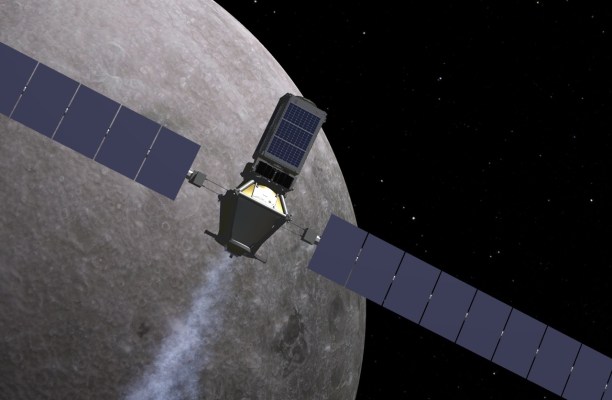Atomos tows a $16M load of funding to create tugboats in space

You may not have known that space needs tugboats, but now you do — and Atomos Space just closed a $16.2 million Series A investment, which will enable the company to complete its demonstration mission where it will show off its docking and towing capabilities. The company is building a series of Orbital Transfer Vehicles (OTV) that makes it possible to reposition satellites in space. The theory is that, by making it possible to move flying objects into different orbits, they don’t have to have full navigation capabilities themselves, which in turn should make operating spacecraft much cheaper. The company claims its existence effectively halves the launch costs of satellite operators.
The company is starting with high-powered electric propulsion systems, and is eager to share that it sees those propulsion methods as stepping stones for its nuclear OTV options, which would be able to travel faster and farther, and offering commercial mobility services. The company is also positioning itself to be able to use these technologies for asteroid deflection, effectively putting Harry Stamper out of a job.
“I worked on launch vehicle design, and then spacecraft propulsion system design and also some advanced technologies for moving around in space, and realized very quickly that how we do space logistics is sub-optimal. The best analogy that we use is with aircraft. Imagine you have a single-use plane, you are the sole passenger, and you have to take everything with you, unable to do shopping on the way. So if you want to drive around at your end destination, you need to take the car and you need to take gas with you,” explains Vanessa Clark, CEO and co-founder of Atomos Space. “Ultimately, it’s very expensive and limited. What we really need is a hub and spoke logistics model for space. This allows us to do really cool things, commercial missions like Earth observation, global communications, broadband internet, but it also allows us to take the next step as a species and do more things in deep space that makes sense economically and from a scientific perspective.”
This is the company’s third round of VC funding, and so far it has built and tested on the ground, including its docking and propulsion systems. The next big step is to fly the first vehicle.
“This is a lot of autonomy. We are working on having a self-driving satellite that can detect and navigate to a client and grab onto it safely. We have the ability to optimize our propulsion system for operating just in space, unlike a launch vehicle that also has to design for getting into space,” Clark highlights the company’s competitive advantage. “That means we can go farther and use less propellant. With this new round of funding we’re finishing the build of our first two vehicles, and we have booked a launch in just under 12 months. It’s going to be a really exciting mission, where we are flying two full-size commercial vehicles.”
The first use cases of the technology is to take launched satellites to their final destinations and to reposition satellites mid-mission. When vehicles have reached their end of service, they can be moved to graveyard orbits, or disposal orbits so that they can burn up in the atmosphere.
“Our goal as a company is to make any orbit as accessible as low Earth orbit (LEO). On Earth, if you want to send something overseas, it is as easy as sending a package to the next town over. You just go to the post office. We want that to be possible for space,” explains Clark. “We want to be operating a fleet of orbital transit vehicles in Earth orbit that can provide the vast missions for a set of clients, spacecraft operators, Space Station operators and also companies and agencies that want to explore beyond the atmosphere.”
The company is particularly excited about nuclear propulsion in space, and are investing heavily on that front, telling us it offers an order of magnitude improvement in speed and payload capabilities.
With the current round of funding, the company says it will double the size of the team and launch its first two OTVs in early 2024. The investment was led by Cantos Ventures and the Yamauchi No. 10 Family Office (that’s the family that founded Nintendo), with participation from Upheaval Investments, Dolby Family Ventures, Arden Road Investments, Elefund and Techstars.

